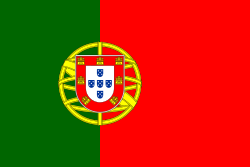Velká východoasijská sféra vzájemné prosperity
| Velká východoasijská sféra vzájemné prosperity | |
|---|---|
 Členové VVSVP: | |
| Vznik | 5.- 6. listopadu 1943 |
| Zánik | 2. září 1945 |
| Sídlo | Tokio, Japonské císařství |
| Úřední jazyk | japonština,čínština, jazyky členských zemí |
| Japonský císař | Hirohito |
| Některá data mohou pocházet z datové položky. | |
Velká východoasijská sféra vzájemné prosperity (japonsky 大東亜共栄圏, だいとうあきょうえいけん, Dai tóa kjóeiken), nazývaná také blok jenu, byl svaz japonských loutkových či okupovaných států za druhé světové války, vycházející z konceptu „bloku asijských národů, vedených Japonskem a nezávislých na koloniálních mocnostech“. Tato organizace byla uvedena do chodu na Velké východoasijské konferenci roku 1943. Zanikla s kapitulací Japonska dne 2. září 1945. Většina těchto zemí byla také členy Osy.
Členové
Externí odkazy
 Obrázky, zvuky či videa k tématu Velká východoasijská sféra vzájemné prosperity na Wikimedia Commons
Obrázky, zvuky či videa k tématu Velká východoasijská sféra vzájemné prosperity na Wikimedia Commons
Média použitá na této stránce
The national flag of Kingdom of Thailand; there are total of 3 colours:
- Red represents the blood spilt to protect Thailand’s independence and often more simply described as representing the nation.
- White represents the religion of Buddhism, the predominant religion of the nation
- Blue represents the monarchy of the nation, which is recognised as the centre of Thai hearts.
bendera Indonesia
Variant version of a flag of Japan, used between January 27, 1870 and August 13, 1999 (aspect ratio 7:10).
Variant version of a flag of Japan, used between January 27, 1870 and August 13, 1999 (aspect ratio 7:10).
Flag of Portugal, created by Columbano Bordalo Pinheiro (1857–1929), officially adopted by Portuguese government in June 30th 1911 (in use since about November 1910). Color shades matching the RGB values officially reccomended here. (PMS values should be used for direct ink or textile; CMYK for 4-color offset printing on paper; this is an image for screen display, RGB should be used.)
Autor:
- Flag_of_Burma_1943.svg: *Flag_of_Burma_1943.gif: Jaume Ollé
- derivative work: Rannpháirtí anaithnid (talk)
- Flag_of_Burma_1943.gif: Jaume Ollé
- Flag_of_the_Alaungpaya_Dynasty_of_Myanmar.svg: *Flag_of_Burma_(Alaungpaya_Dynasty)_2.png: Gryffindor
- Presidential_Flag_of_Burma.svg: *Presidential_flag_Burma.PNG: Gryffindor
- Peacock_symbol_Burma.svg: *Peacock_symbol_Burma.PNG: Gryffindor
- derivative work: Fred the Oyster
- derivative work: NikNaks93 (talk)
- derivative work: Mnmazur (talk)
- derivative work: Mnmazur (talk)
Tento vektorový obrázek byl vytvořen programem Inkscape .
Autor: Kendrikdirksen, Licence: CC BY-SA 3.0
Rozmezí japonských loutkových států za druhé světové války (Velká Východoasijská sféra vzájemné prosperity)
Autor:
- Flag_of_Burma_1943.gif: Jaume Ollé
- derivative work: Rannpháirtí anaithnid (talk)
The flag of Burma (Myanmar), 1943-1945
Flag of the Resident-General of Korea
Autor: User 50, Licence: CC BY-SA 3.0
Flag used during Japanese occcupation
Flag of Manchukuo
Flag adopted by the Indian National Congress in 1931. First hoisted on 1931-10-31
Full version of the outdoors flag of the Republic of China-Nanjing(w:en:Wang Jingwei Regime). The pennant above reads Peace, Anti-Communism, National Construction (和平反共建國). Used by the Wang Jingwei government of the Republic of China-Nanjing.
"和平" means "harmony" or "peace". "反共" means "anti-communism". "建國" means "building a state" or "building a country".
Autor: Lexicon (SVG file), Licence: CC BY-SA 3.0
Dubious claimed Flag of Cambodia under Japanese occupation.[1][2]
- ↑ http://www.crwflags.com/fotw/flags/kh-japan.html (This source is the origin of where the image was created from and the source states that it is a claimed to exist but it is dubious whether it actually did).
- ↑ Original Khmer language source text: ទង់ដាគិការគ្រប់ត្រង់ដោយជប៉ុន ឆ្នាំ ១៩៤២-១៩៤៥ កន. អាណានិគមបារាំងសែសពីឆ្នាំ ១៩៤៥៥-១៩៤៨ នៅថ្ងៃទី០៤ សីហា ១៤៤៥ កង់អាកាសចរណ៍អាមេរិក បាន ទម្ងាក់គ្រាប់បរិមាណូ នៅទីក្រុង ហេរ៉ូស៊ីម៉ា និនណាកាសាគឺ ធ្វើឲ្យ ប្រទេសជប៉ុនប្រកាសចុះចាញ់សង្គ្រាម ក្រោយពេលដែលត្រូវសហរដ្ឌ អាមេរិកទម្ខាក់គ្រាប់បែកបរិមាណ្ឌ ។ ដ្ញូលដ្ឋានកងទ័ពជប៉ុន ត្រូវបានដកចេញពីវណ្ឌូទិន ជាហេតុ បណ្តាលឲ្យអាណាខិគមបារាំងវសស មានដីវិតរស់ឡើងវិញនៅ ភណ្ឌូចិន ហើយទង់ជាតំសម័យអាណានិគមបារាំងដែស ដែល មានពីមុនក៏ត្រូវបានត្រឡប់មកប្រើប្រាស់វិញ។ គួរកត់សម្គាល់ថា តុលាការអន្តរជាតិទីក្រុងឡាអេ បានសម្រេចសេចក្តីឲ្យកម្ពុជាឈ្នះថៃ លើប្រាសាទព្រះវិហារ នៅថ្ងៃទី១៥ មិជុនា ១៩៦២ គឺតាមវយៈ ព្រឹត្តការណ៍ ដំណើរទស្សនកិច្ចនែព្រះអង្គដ្ឋាស់ ដាម រ៉ុន អគីតរដ្ឋមន្រ្រី ក្រសួងមហាផ្ទៃ និដ ដាប្រធានវិទ្យាស្ថានភូមិន្តស្ងម ទទួលបនុក
Solid red square





















